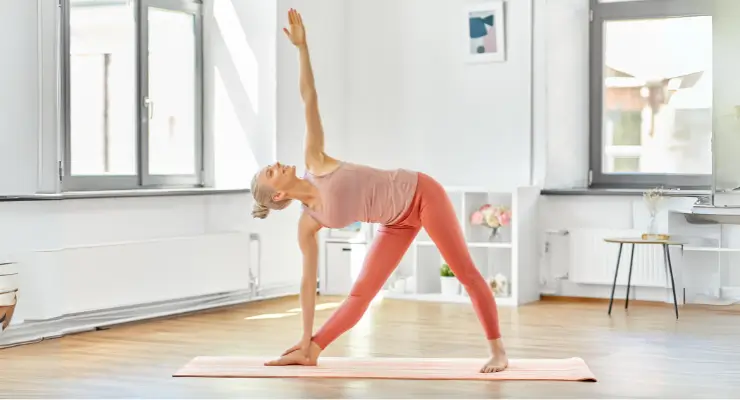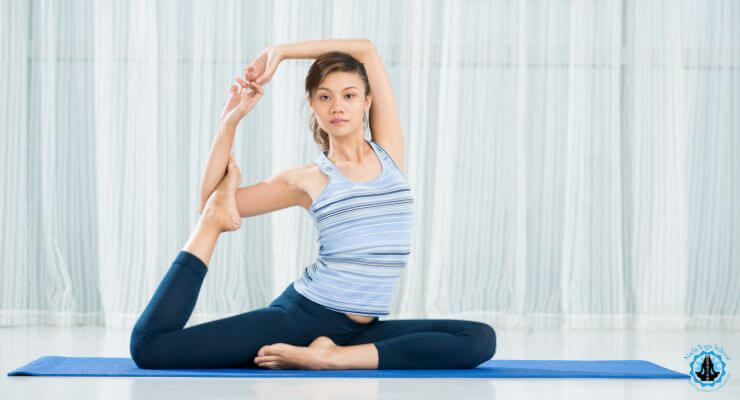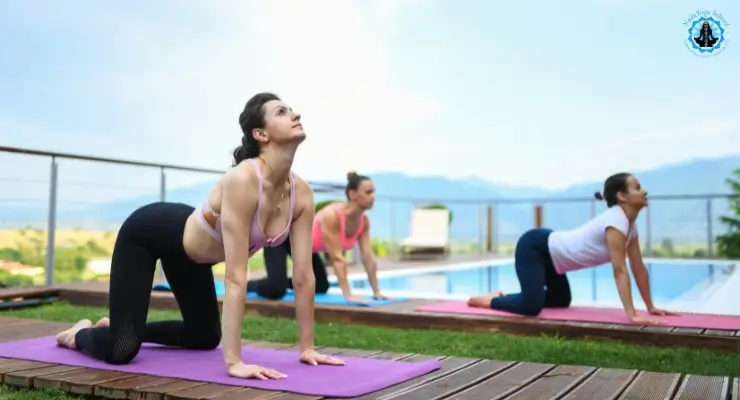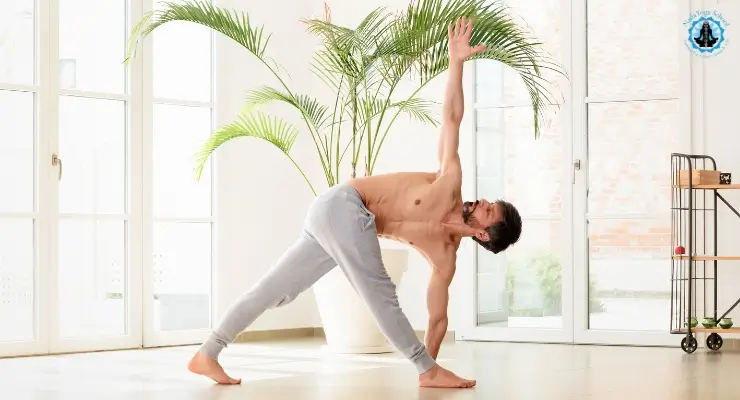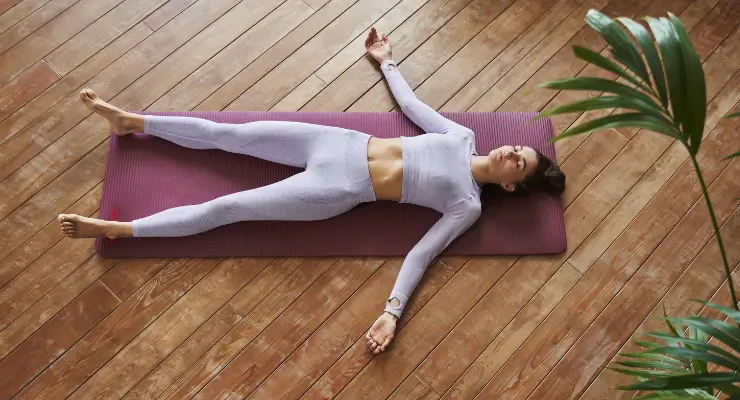Trikonasana, or the Triangle Pose, is a fundamental yoga asana that offers a myriad of benefits ranging from improved flexibility to enhanced digestion. This pose involves a lateral stretch of the spine, hips, and legs, creating a triangle shape with the body, hence its name. Let’s delve into the intricacies of Trikonasana, covering its execution, benefits, anatomy involved, preparatory poses, modifications, and contraindications.
How to Perform Trikonasana Step by Step
- Begin in Tadasana (Mountain Pose) facing the long edge of your mat.
- Step or jump your feet about 3-4 feet apart, raising your arms to the sides at shoulder height.
- Turn your right foot 90 degrees outwards and your left foot slightly inwards, ensuring your heels are aligned.
- Extend your torso to the right, bending from the hip, not the waist. Place your right hand on your ankle, shin, or the floor outside your right foot, whichever is comfortable.
- Stretch your left arm towards the ceiling, aligning it with your shoulders. Your body should form a straight line from your left fingertips to your left foot.
- Look up at your left hand, keeping your neck in a comfortable position. Alternatively, look forward or down if neck movement is uncomfortable.
- Hold the pose for 10-30 seconds, breathing deeply. To release, inhale as you come up back to standing, arms extended. Repeat on the opposite side.
Benefits of Trikonasana
Trikonasana offers extensive benefits, including:
- Enhanced Flexibility: It stretches the thighs, knees, ankles, hips, groins, hamstrings, calves, shoulders, chest, and spine.
- Strengthens Muscles: It tones the legs, knees, ankles, arms, and chest.
- Improves Digestion: The pose stimulates the digestive organs, potentially aiding in better digestion.
- Stress Relief: It can alleviate anxiety, stress, and tension, particularly beneficial for the lower back.
- Improves Equilibrium: The pose enhances both mental and physical balance.
- Therapeutic for Back Pain: Regular practice can alleviate symptoms of sciatica and lower back pain.
Anatomy Involved
Trikonasana engages multiple muscle groups, including the hamstrings, glutes, thighs, calves, shoulders, and the muscles of the arms. Proper alignment ensures that the spine is extended laterally without compression, promoting flexibility and strength in the associated muscles.
Preparatory Poses
To prepare for Trikonasana, consider practicing the following poses:
- Utthita Hasta Padangusthasana (Extended Hand-To-Big-Toe Pose)
- Parsvottanasana (Intense Side Stretch Pose)
- Warrior II (Veerabhadrasana II)
- Prasarita Padottanasana (Wide-Legged Forward Bend)【9†source】.
Modifications and Variations
To accommodate different skill levels and physical conditions, Trikonasana can be modified:
- Use a block under your lower hand to support balance and alignment.
- For an added challenge, try variations like the Bound Triangle Pose or Revolved Triangle Pose, which introduce twists or binds for increased intensity.
Contraindications
While Trikonasana is beneficial, certain conditions warrant caution or avoidance:
- Avoid or modify the pose in cases of diarrhea, low or high blood pressure, migraines, or severe back issues.
- Pregnant women should consult with a professional for suitable modifications.
Trikonasana is a versatile and beneficial pose within the yoga practice, suitable for a wide range of practitioners. Incorporating this pose into your routine can lead to significant improvements in flexibility, strength, and mental well-being. However, always listen to your body and modify the pose as necessary to suit your individual needs.

